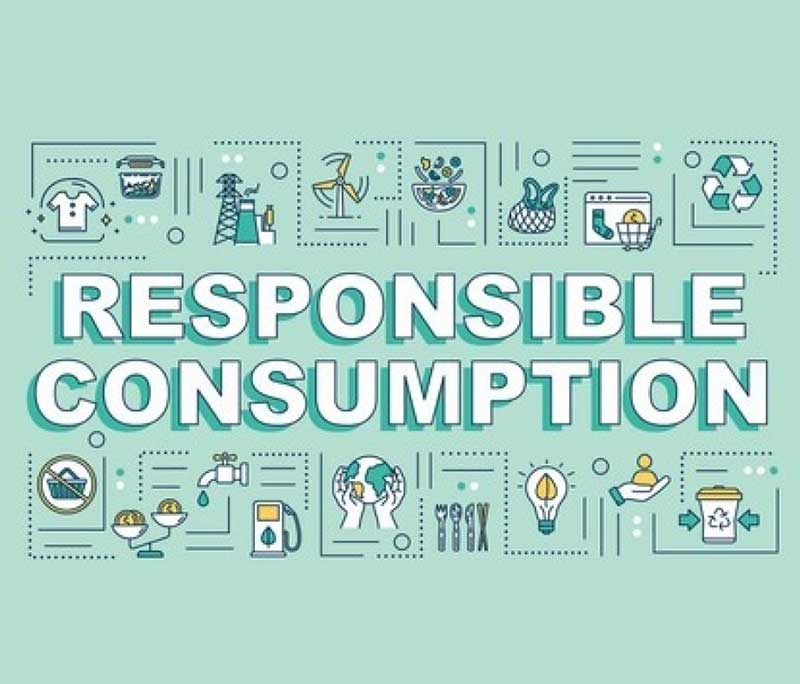
Building Sustainable Production and Consumption Patterns
- 7th July 2021
- Mumbai
- Others
Written by: Nikhila Kola
Over the past two decades, India transitioned from poverty to adequacy. Although the disparity between the poor and the rich continues, a large percent of the population shifted to a well-to-do lifestyle. Thanks to the transforming technologies and the ever-growing markets. For India, the GDP in 1991 was USD 266 billion with a per capita income of USD 300 billion. With the incoming foreign brands and budding local brands, the Indian markets have flourished beyond expectations. In FY18, the rural and urban consumption in India stood at 9.7 percent and 8.6 percent, respectively. Besides economic and social progress, these markets have also contributed to significant degradation and exploitation of natural resources. Although the major environmental damage is caused by production activities such as electricity generation, goods manufacturing, mining, etc., consumption also plays an important role. Not to forget, the rate of consumption determines the rate of production. The effect of consumption can be:
1. Primary: Direct use of products and services like driving a car or burning fossil fuels for cooking
2. Secondary: Use of consumer goods and energy services; where the waste generated along the production chain and post-consumption poses the problem
3. Tertiary: Through import and export of goods; the consumption in our country sometimes demands production and exploitation of resources in some other country.
In the 21st century, the three basic commodities for mankind are food, water, and energy. Food production globally contributes to 19–29 percent of greenhouse gas (GHG) emissions and 70 percent of freshwater withdrawals. Despite the excessive food consumption and wastage, the food industry faces an unprecedented challenge to feed 60 percent more food to the population by 2050. The GHGs emissions produced by farming, processing, transporting, storing, cooking, and disposing of the food, represent its carbon footprint. The solution for reducing our food’s carbon footprint is:
1. Eat Vegetarian
2. Cook smart: Plan recipes to reduce waste, cook new meals from leftovers, compost the vegetable scrap, avoid preheating, eat raw foods as it is healthy
3. Shop wisely: Avoid frozen and packed food, buy in bulk to reduce packaging waste, shop local.
4. Reuse and recycle: Glass and plastic containers make better storage options, reuse plastic bags and say no to extra plastic, grow food through terrace farming to save money and resources.
Processed foods are not eco-friendly. Besides, they are also responsible for the prevalence of under-nutrition, obesity, and other health concerns in 45 percent of the countries, which adds to the global disease burden.
Water is a primary input for all the sectors. Whereas, the water crisis and the “Day Zero” are two harsh realities of the world. Therefore, the balance between water demand and availability needs to be realized. The measures for water conservation can be voluntary (i.e. at the individual level) and involuntary (i.e. through repairing leaking distribution systems and sewer pipes, metering all water connections, etc.). Similarly, energy is also equally important. The households, transportation, media, etc. all run over electricity, which is a form of energy. India is largely dependent on conventional energy sources such as fossil fuels. Fossil fuels are a threat to the environment. Starting from their extraction to their combustion, they generate tons of waste products. Fossil fuels are also known to get exhausted in the future. Hence, the energy and all the available resources need to be consumed judiciously.
As an individual, we all can voluntarily conserve by consuming less. But how do we tackle large-scale issues? How to make production and consumption green and sustainable? The coordination for social and environmental compliance throughout the supply chain should be ensured by the industries and enterprises. The approach to close the material loop can be implemented through the Design for Environment (DfE) concept. DfE includes the design for disassembly, remanufacturing and recycling. The higher the ease of disassembly, the fewer efforts are required to recycle or remanufacture the product. Other strategies can be the use of green energy, enhancing the durability of the product, reduce the use of toxic chemicals, etc. The end of pipe treatment technologies does not destroy hazardous effluents. Hence, the input material and its transformation should be assessed throughout the product lifecycle.
The implementation of cleaner production is mostly impeded by the lack of an efficient monitoring system, weak regulatory framework, and implementation of policies. The policymakers should develop more stringent emission standards and imply higher emission discharge taxes. Other approaches to promote green markets can be the Public-Private Partnerships (PPP), investing in knowledge and human resources, incentivization of green tech, etc. Industries should incorporate sustainability as a key aspect in their business model. Often, it’s not right to solely blame the industries and the policymakers, because we as consumers also carry the responsibility to show more interest in green products to maximize their numbers in Indian and international markets. Thankfully, the growing concern for climate change mitigation has triggered a new wave of “Green Consumerism”.
Source: News Agencies
Image Source: Shutterstock